Notorious
by Alfred Hitchcock
(1946)
Notorious is a love story, told by way, of an espionage story. Cary Grant plays a man who seems to be working as an American OSS agent (the agency that preceded the CIA), who, in the process of trying to get a German woman, played by Ingrid German, to do spycraft for the USA, seems to fall in love with her, and she seems to fall in love with him. This was one of Hitchcock’s mid-career masterpieces, released in 1946, one of his first films for Hollywood. The film is fantastic. Grant and Bergman are perfect, and deliver everything I’d ever want out of a movie. The script is magic. And needless to say, the thing is shot like a miracle, with a few trick shots in the film that are just stunning. Viewing it today, for the first time, it doesn’t feel aged, it feels fresh and exciting. Anyway, you should watch it. Included on the Criterion BluRay supplemental features are a couple ‘classes’, one of them by film scholar David Bordwell, who teaches how suspense works. Damn, that portion alone is worth the cost of admission to any artist studying how ‘these things work’. I recommend picking the film up in physical form with these supplementary showings attached (especially since you can’t easily stream the film right now anyway, wtf?)
But even if you don’t dwell that deep past watching the film, I recommend the first supplemental feature on the disc, the making-of documentary, directed by David Thompson in 2009 for a French series called Once Upon a Time, ‘which details the making of Notorious and the sociopolitical climate in which it was created.’ One part of the documentary takes time to analyze a long kiss between Grant and Bergman, which was staged as a series of short kisses to get around censorship—but also—to achieve something greater.
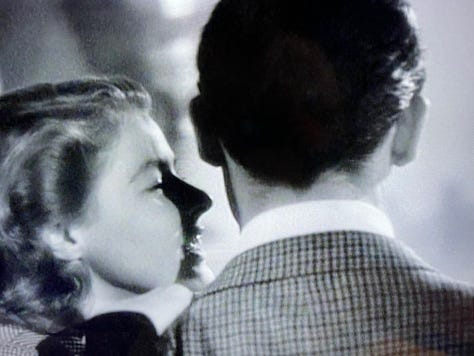
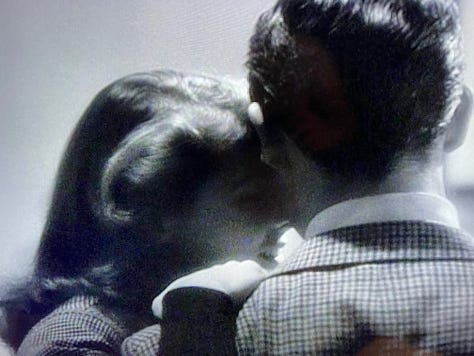
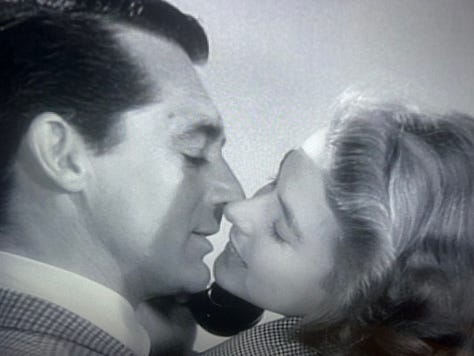
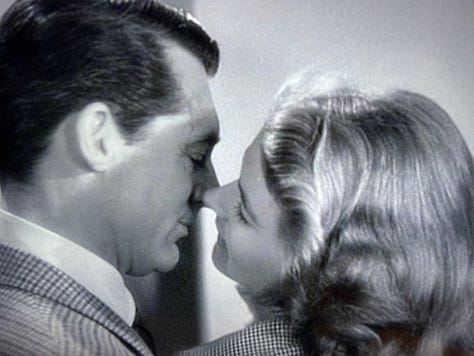
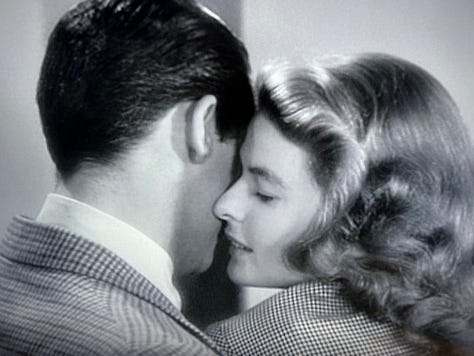
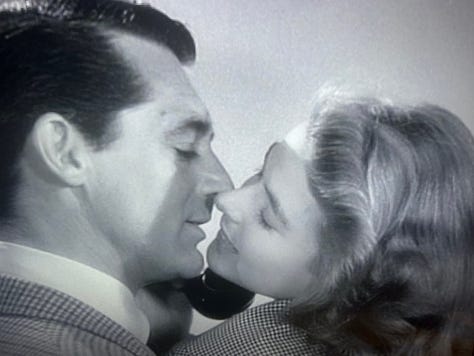
Ingrid Bergman: Hitchcock was very clever, and invented a love scene, with a kiss, that became famous in those days. For a kiss couldn’t last more than two seconds I think it was, it had to break. You couldn’t be in a horizontal position, even with clothes on. And he invented this thing that they tried to cut, and he won because not one kiss was longer than two seconds, but there were so many of them, you see.
Isabella Rossellini (Ingrid Bergman’s daughter): It’s a lovely scene, and they played it so well, it’s harder, I would imagine, that scene, it’s harder than a long kiss, because you have to have much more intimacy, or friendship, to do a kissing … and playing around … like two lovers really do, and they did that scene, but Hitchcock really did it because he wanted to piss off the censorship, and it turned out to be one of the most tender and amusing, loving scenes, in films.
Peter Bogdanovitch: I asked Hitch why he wanted to do it in one shot, and he told me this elaborate story about being on a train once, somewhere in Europe, and watching this couple, arm in arm, walking in the fields, and (begins Hitchcock impersonation): ‘At one point, the young fellow stopped to urinate against a tree, and his girl didn’t let go of him, looked down occasionally to see how he was doing, and never let go, and I thought, There you go, you see love cannot be interrupted, even by urinating. So I thought I’d do the whole thing in one shot.’
Cat People (1942) and Curse of the Cat People (1944)
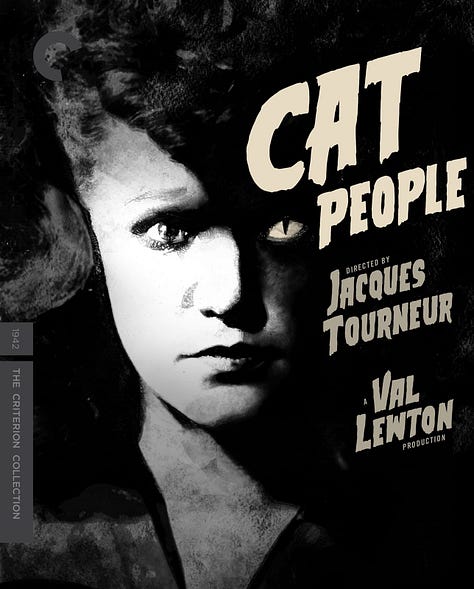
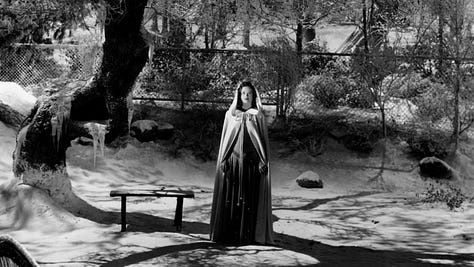
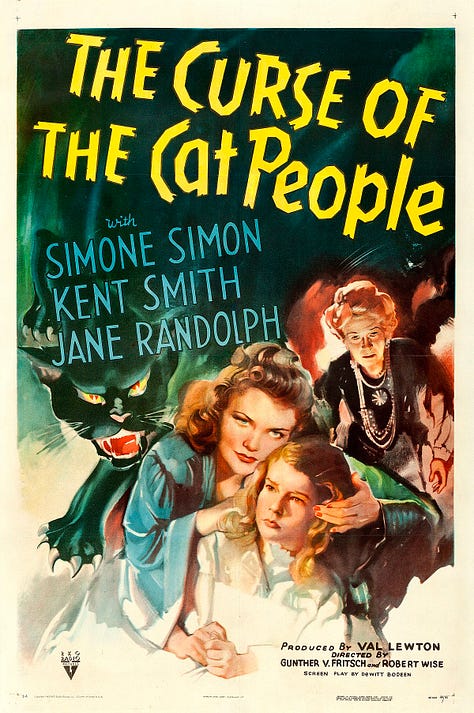
I’ve been watching a lot of movies that my friend Jimmy Cajoleas recommends. Two of the absolute best are Cat People and Curse of the Cat People, both the mutated brainchild of Val Lewton, who, after his success as an (uncredited) script writer on big films such as Gone With the Wind, got pulled into working with RKO. Legend has it, they approached Lewton with the offer to make a picture for them, and he said, ‘Sure, I want to make a personal film about my family in the Ukraine and the struggles they’ve had to endure’ and RKO said, Sure, you can make that film, but first you have to make one for us, there are two caveats, the title has to be Cat People, and the film has to be a low budget horror movie. Val Lewton had no interest in making ‘horror pictures’ but went along with it, so he could then produce a later film about his homeland and his family. He enlisted a director and a screenwriter, and helped shape what was to become a script for Cat People, which still did manage to squeeze in some things about his life and homeland, well … kinda … in the ballpark anyway … an ancient curse originates from Serbia (not Russia or the Ukraine, where Lewton was from). ‘The film tells the story of Irena Dubrovna, a newly married Serbian fashion illustrator obsessed with the idea that she is descended from an ancient tribe of Cat People who metamorphose into black panthers when aroused. When her husband begins to show interest in one of his coworkers, Irena begins to stalk her.’
The film is great. But partly, as if often the case I am learning, because it failed so hard during the making.
Problems began day one on the set.
Lewton met with the art department and saw the ‘cat suit’ they had designed for the killer panther woman and was so disappointed he deemed the suit absolutely unusable and that it was better not to show the killer panther at all.
So—much of the horror in the film is left to the imagination of the viewer, and because of that, the film has only grown in elegance, strength, sophistication, all those cool descriptors. Not to mention, Cat People has what is considered the first JUMP SCARE. It’s a great film. But the followup, the film RKO promised Lewton he could make if he did Cat People … there was yet another caveat. Lewton had to make that personal film a sequel to Cat People and he had to use the same cast. But damn, that followup film is arguably even better.
Curse of the Cat People, ‘tells a story about a young girl who befriends the ghost of her father's deceased first wife, a Serbian fashion designer who descended from a race of people who could transform into cats. The film, which marks Wise's first directing credit, is a sequel to Cat People (1942) and has many of the same central characters, but the plot is only tangentially related to its predecessor.’ This followup film is something of a demented fairy tale, at times sinister and magically charming, set in Tarrytown, NY, and featuring the bridge to Sleepy Hollow and in part telling the story of The Headless Horseman for some reason.
Anyway, I recommend both movies, big time, and you needn’t be a fan of scary movies at all to enjoy them. That I promise.
The Rubin Museum
Yesterday I went to the Rubin Museum with my friend because we have been reading a bunch of mysticism together, directing, discussing, and admiring, some of it Christian, some of it Buddhist (Zen or not) but lately, Hindi. We’d recently read and discussed over text, and at various watering holes, the Upanishads, which are mainly philosophical stories that teach lessons about consciousness, mediation, life and death, the cosmos, and not to mention, rebirth. “The Upanishads document a wide variety of ‘rites, incantations, and esoteric knowledge.’” It’s great reading. It makes for great thinking, re-thinking, and study. I wrote a short story about reading the Upanishads, in a style that is part my own, and part homage to the beauty I found in reading those ancient texts. You can read that story here if you like — “The Upanishads”. The Rubin Museum is incredibly beautiful, it houses ancient Hindi art and artifacts (sculptures, carvings, paintings, textile-work and more); and Buddhist art and artifacts, as well as select offerings from modern Himalayan artists, some of that video-based. The museum’s physical location in NYC is closing for good, and going ethereal—going online. But I suggest you take a trip to 150 W 17th St, New York, NY 10011 and see it for yourself before it closes down on October 6th, 2024.
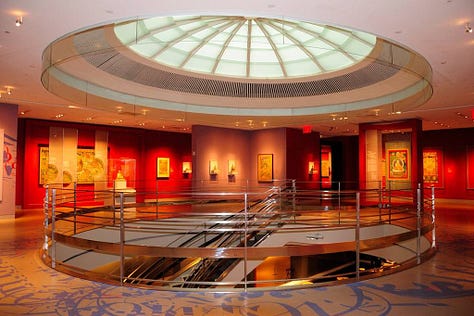


I really loved this Wheel of Life (bottom left) (featuring a prominent Yama, the god of death, who I’m a big fan of) painted on cloth. And here are some details of larger paintings that I hope you go see in person before the museum closes … as well as a sculpture of one of the coolest yellow dudes I ever did know besides Bart Simpson.
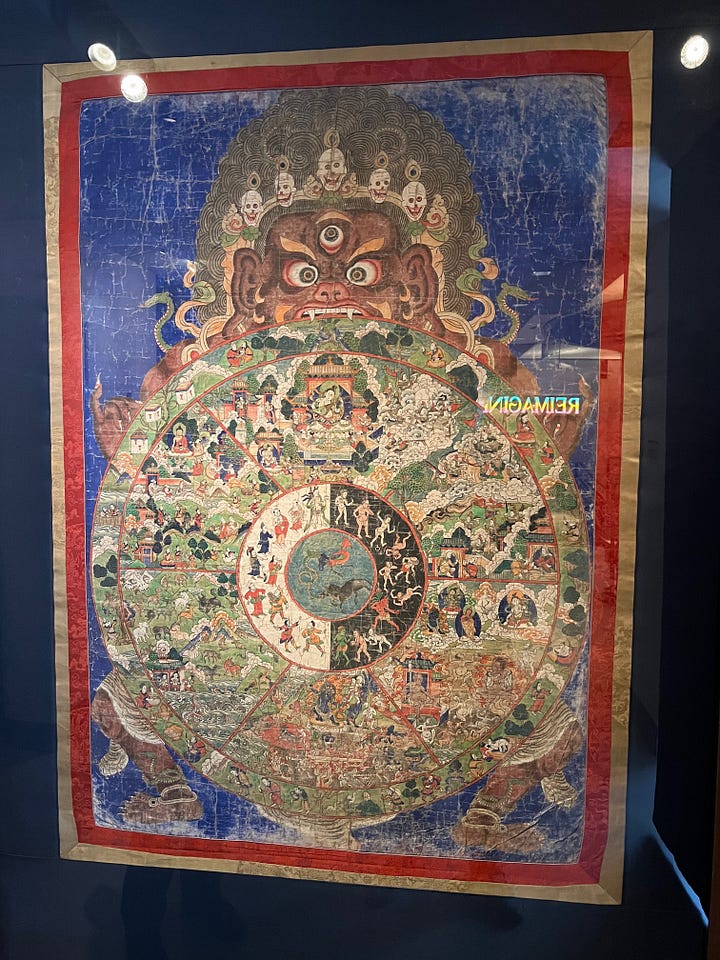
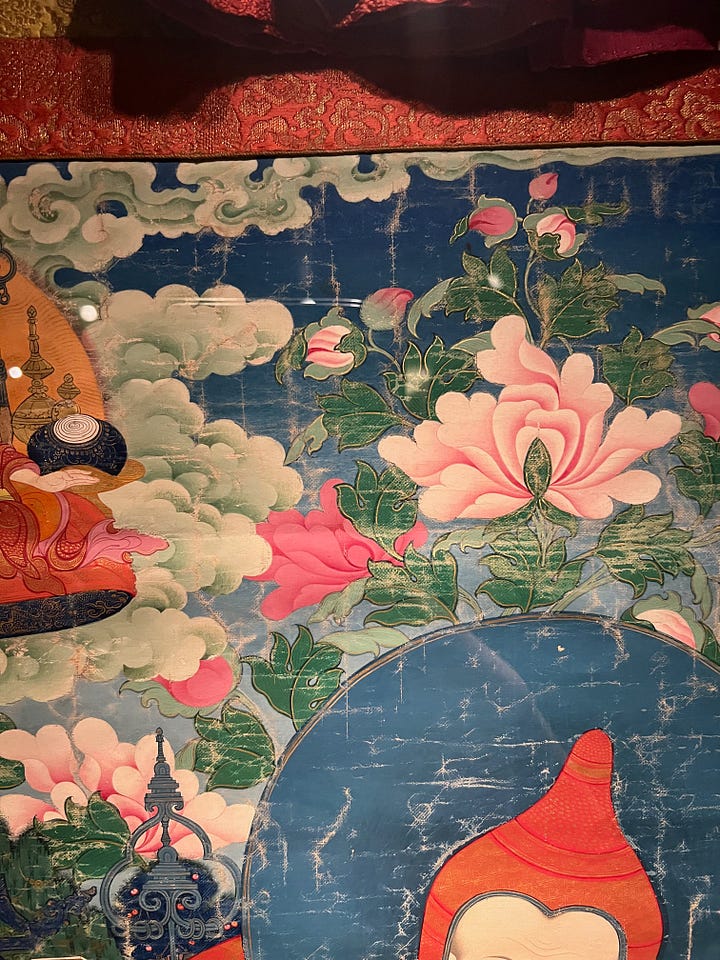
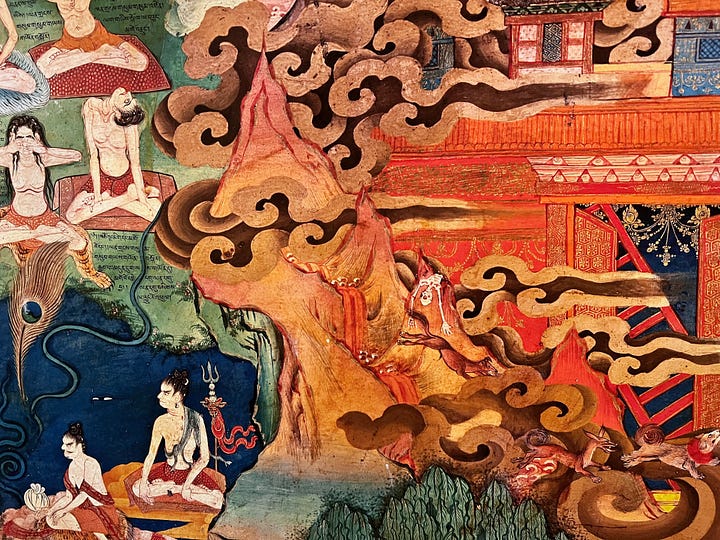
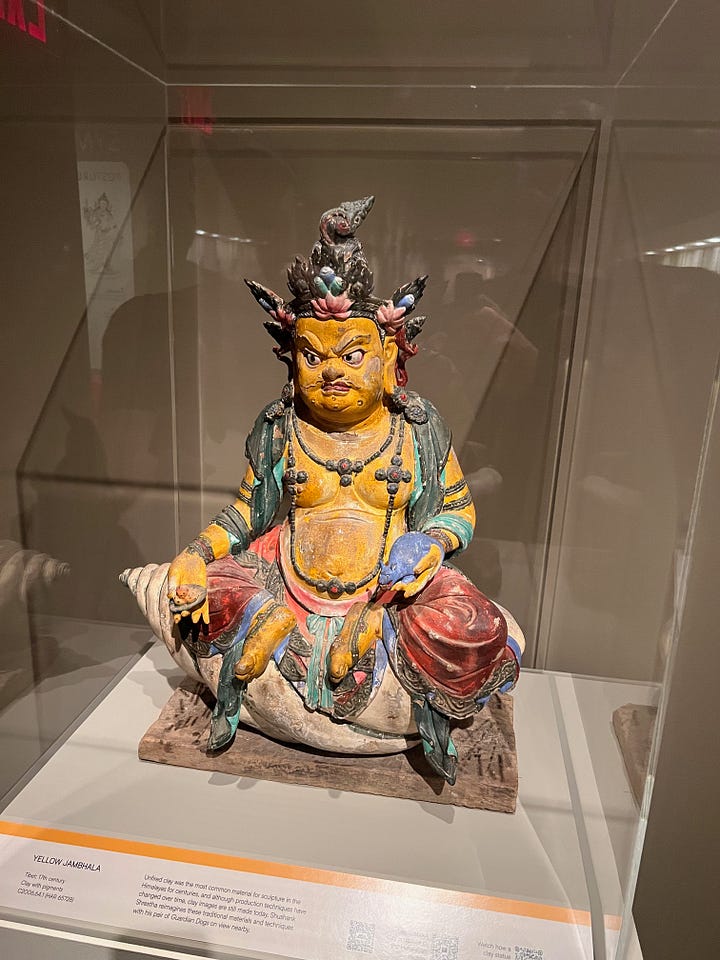
England and Wales
I recently went to England with my wife, Rae. She had to go there to venture underground into a salt mine and look through a textile archive for the company she works for as an art director.
We took a train out from London to get to this salt mine but then I went into Manchester to rent a car. Well, they didn’t have cars, even manual transmission cars. What they did have was a transport van. So they rented me that. I hadn’t driven a manual transmission in a long time, and when I had, it was done shifting with my right hand while I was driving on the right side of the road. Well, this trip, post-salt-mine out into Wales, was going to have to be done shifting with the left hand on the left hand side of the road. Good news was, there wasn’t that much driving to do. Only nine and a half hours (an unheard of feet of strength in the sport of English and Welch motoring and my van sure did like to tell me that, every 45 minutes or so, a dire alert screaming and flashing where the speedometer should have been visible, ‘DRIVER FATIGUE! PULL OVER!’)
So we saw all kinds of wonderful Welch castles … and little fairytale villages in the Cotswolds and we saw Stonehenge and we went to Oxford where we met up with our new friend, Zach, who was a Rhode scholar and who took us all over town, to pubs and cathedrals, and even on a stroll on Addison’s Walk, the path around the pasture that Tolkien and C.S. Lewis often did.
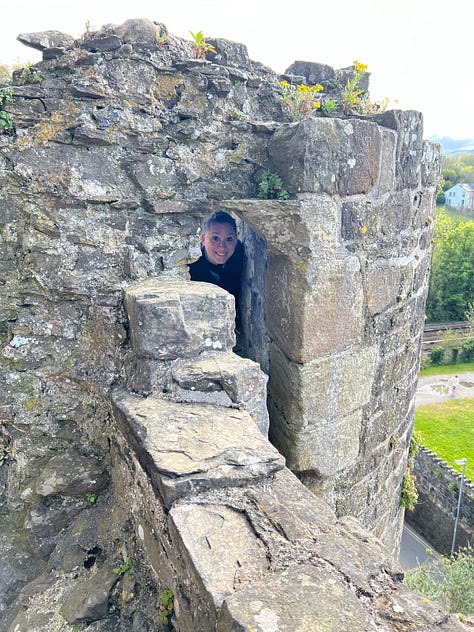



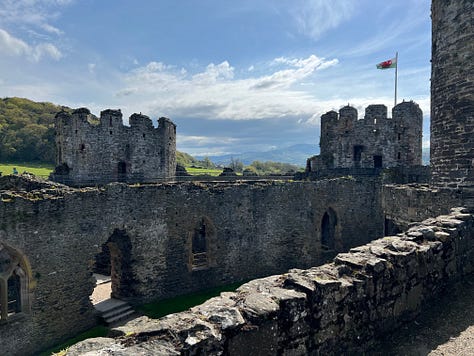
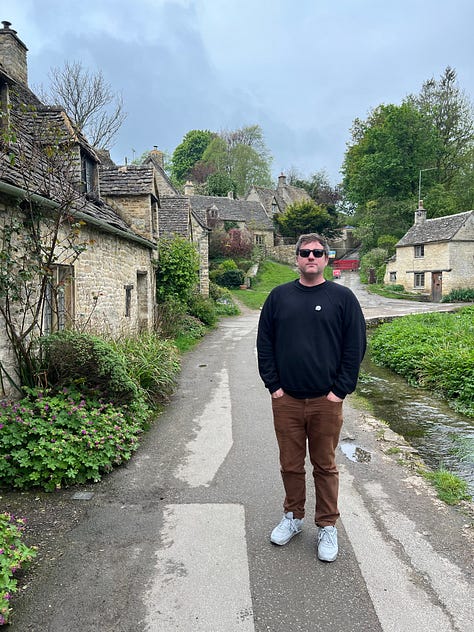
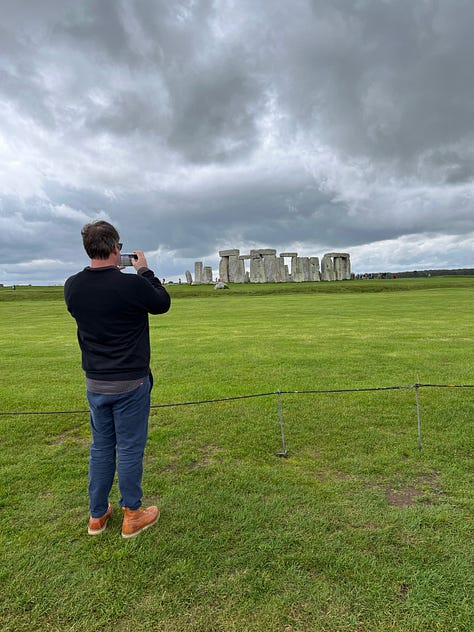
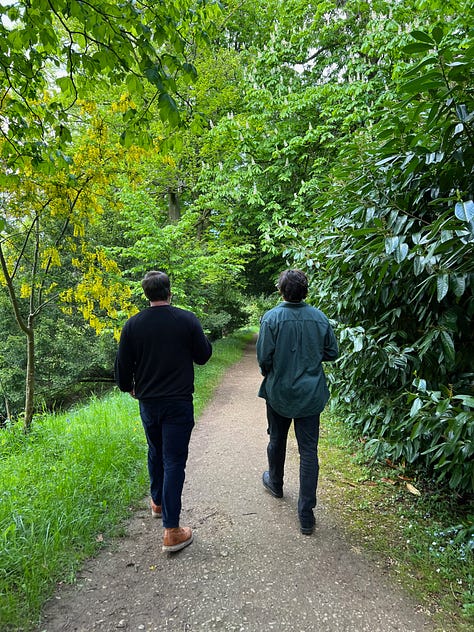
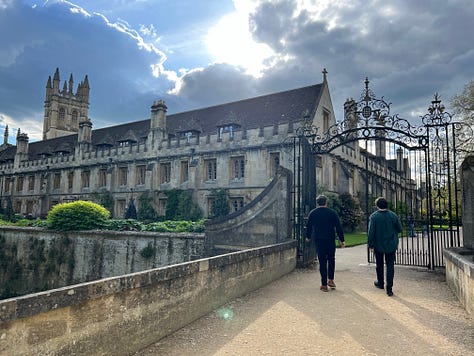
It was a wonderful time. And during all this driving I saw two million sheep and didn’t even collide head on with any other creatures or motorists. One interesting thing Rae and me kept seeing was, all a sudden, there would be a field so shockingly yellow, I’d have to slam on the brakes and we’d sit there and admire it from the van window and go ooooooow and ahhhhhhh.
And I even said, “Man, you know who would have really loved these yellow fields?”
And she said, “Who?”
And I said, “Vincent Van Gogh.”
The fields looked like this from the ground:
And from the sky they looked like this:
They were everywhere … And you know what those yellow flowers are?
Rapeseed.
Vincent Van Gogh would have went gaga over rapeseed.
And he would have put canola oil on everyfucking thing.
He might have even given up using regular oil paints, he might have just added his own pigment to his canola oil and hey.
Now I’m back in America, and it’s raining today, and it reminds me of ‘over there’ and I miss it, just like I miss everywhere, even when I’m already there.
Swann’s Way
I’ve been reading In Search of Lost Time, currently two hundred fifty pages into Volume 2, of 7. Fantastic reading, languid, funnier than anyone ever tells you it is. I’ve been reading ten pages, or more a day, and it’s been serving me well, while reading other things that aren’t as dense.
Lord knows I’ve had the time lately. It got slow at my construction job and I took a leave to do some teaching; to get a minor surgery on my skull(!); to travel to Boise, Idaho on the west coast and to Dallas, Texas—both trips for literary festivals (Treefort and Frontera, respectively); and to turn in drafts of my next two books, a sweeping multi-generational novel that touches a bit on espionage (hence me watching Notorious) and a short story collection (hence me recently reading The Collected Short Stories of Flannery O’Connor—amazing btw if you don’t know).
I have to admit, I’m reading Proust’s three thousand page novel all because I was really intrigued by this NYRB 90 page book called Lost Time: Lectures on Proust in a Soviet Prison Camp by Józef Czapski, translated by Eric Karpeles.
‘During the Second World War, as a prisoner of war in a Soviet camp, and with nothing but memory to go on, the Polish artist and soldier Józef Czapski brought Marcel Proust’s In Search of Lost Time to life for an audience of prison inmates. In a series of lectures, Czapski described the arc and import of Proust’s masterpiece, sketched major and minor characters in striking detail, and movingly evoked the work’s originality, depth, and beauty. Eric Karpeles has translated this brilliant and altogether unparalleled feat of the critical imagination into English for the first time, and in a thoughtful introduction he brings out how, in reckoning with Proust’s great meditation on memory, Czapski helped his fellow officers to remember that there was a world apart from the world of the camp. Proust had staked the art of the novelist against the losses of a lifetime and the imminence of death. Recalling that triumphant wager, unfolding, like Sheherazade, the intricacies of Proust’s world night after night, Czapski showed to men at the end of their tether that the past remained present and there was a future in which to hope.’
Well hell, that sounded amazing to me. I couldn’t wait to read that 90 page book (90 pages with glossary and illustrations and acknowledgements mind you!) but I couldn’t read it without having a semi-intimate knowledge of the material covered, so on I went to read the 3000+ page ‘background material’ necessary in order to understand what Czapski was going on about in that camp.
And here I am, 725 pages or so into the journey and loving the experience. I can’t say yet if the 90 page lecture series will be worth it, as the cherry on top, but eh, who cares?
Here’s my recent review of Swann’s Way:
A masterpiece of lady problems, enthusiastic walks through nature, the lowest circle of hell as soirée/social salon—Nobody told me how funny Proust is, how he writes these long flowing sentences that bend and change and say something complex, yes, but are often full of warmth and humor. Vital stuff. I see why people read Proust and make a big deal about Proust. The guy loved life and it’s right there on every page. Whether it’s a love of nature, a love and mania for the women in his life (and his double’s life), or the cutting apart of sarcastic and ironic people who are not enthusiastic nor passionate about life such as our narrator is. Swann’s Way has wonderful language of course (I read the Davis translation in total and compared passages I’ve boxed in to passages in both the Grieve and the Moncrief/Killmartin, and see differences of course, but I think it’s all about coming to a feeling in the reader and all those translators do the same thing—and an accuracy of language isn’t as interesting to me as what can evoke a feeling, often a mutated feeling in the realm of what was first suggested by the author — case in point, I love Led Zeppelin because they translated Chicago blues in the wrong direction and wound up on Mars with English accents, I love Creedence Clearwater who hail from California and get the music of Arkansas and Texas and Mississippi so wrong that it became something mangled and beatific and unique). But I am most drawn to Swann’s Way because of the characters, especially the narrators family, and Francois their hired help, and who could ever forget their neighbor, Swann, and all his lady problems. It’s all so hilarious and so heartbreaking and the feeling of being alive and what we remember of yesterday so distorted that one can’t help but want cry their little eyes out about it somewhere in the French countryside with a magic lantern going and a special cookie never too far away.
——
Thank you for reading
Bud Smith
Oh and if you haven’t read my novel, Teenager yet, I highly recommend that too.



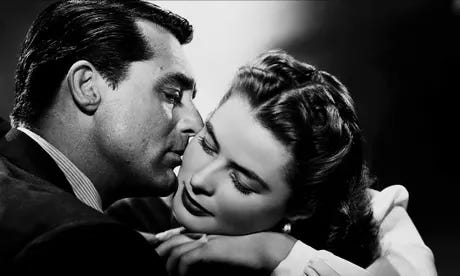

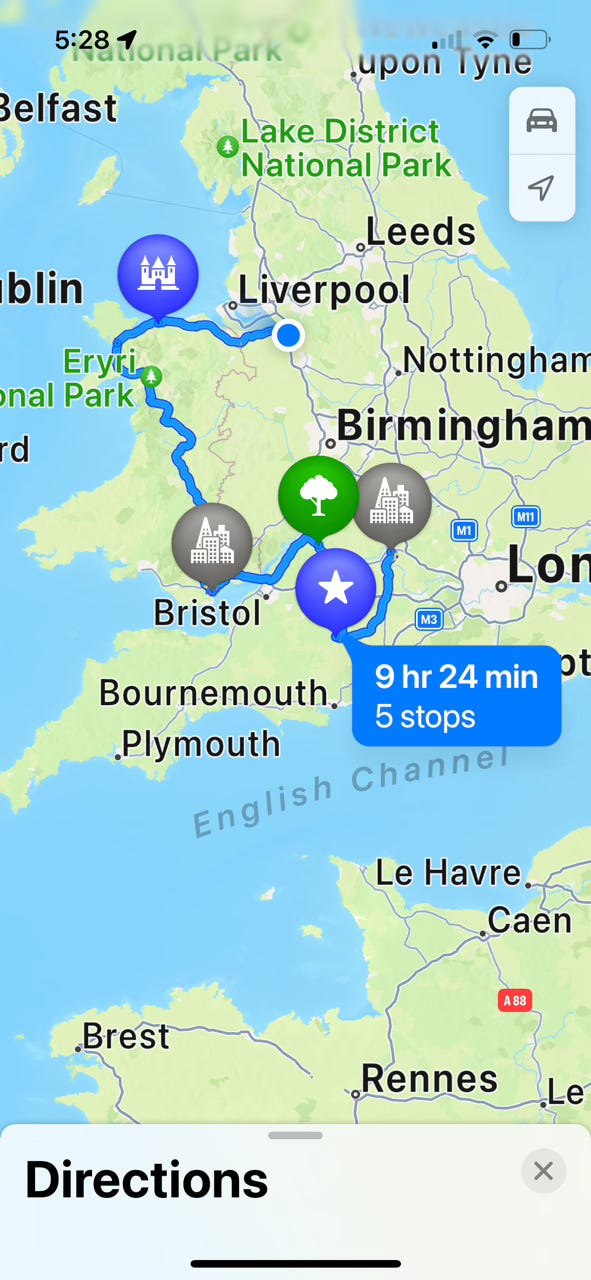
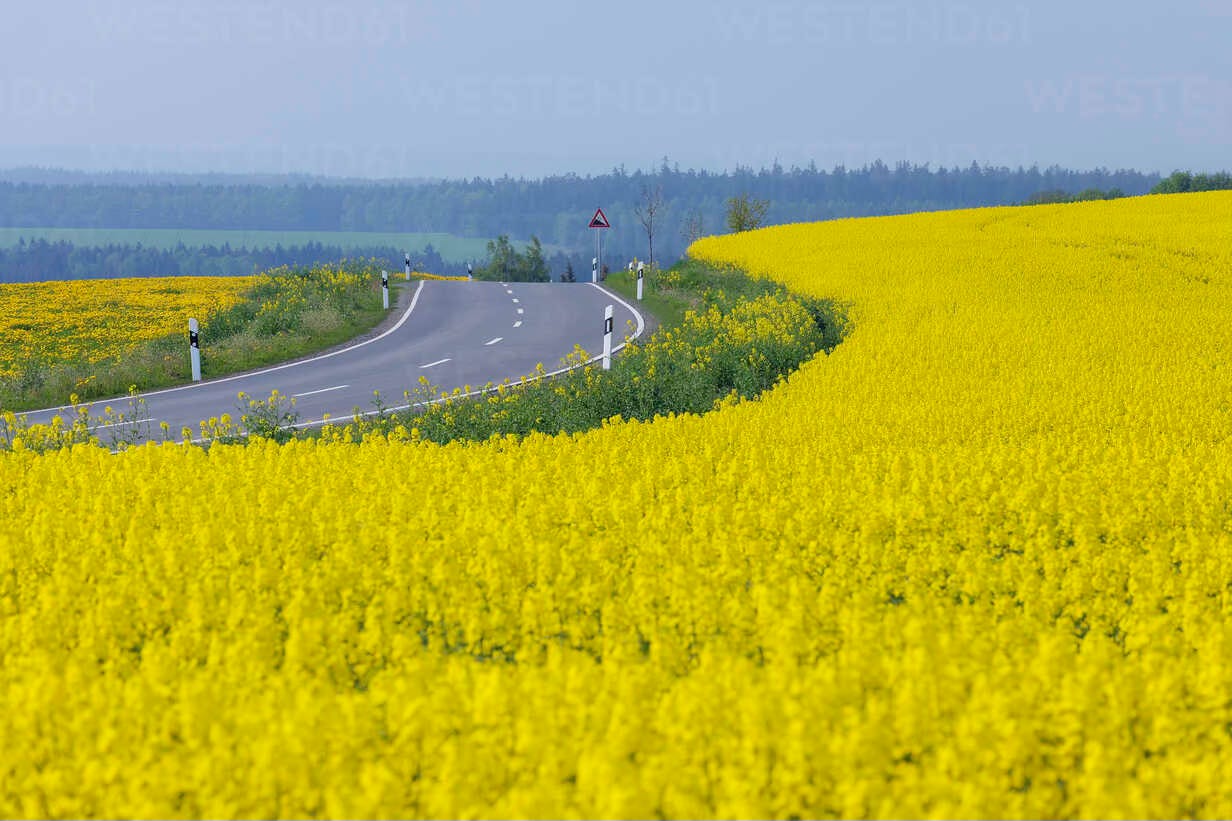
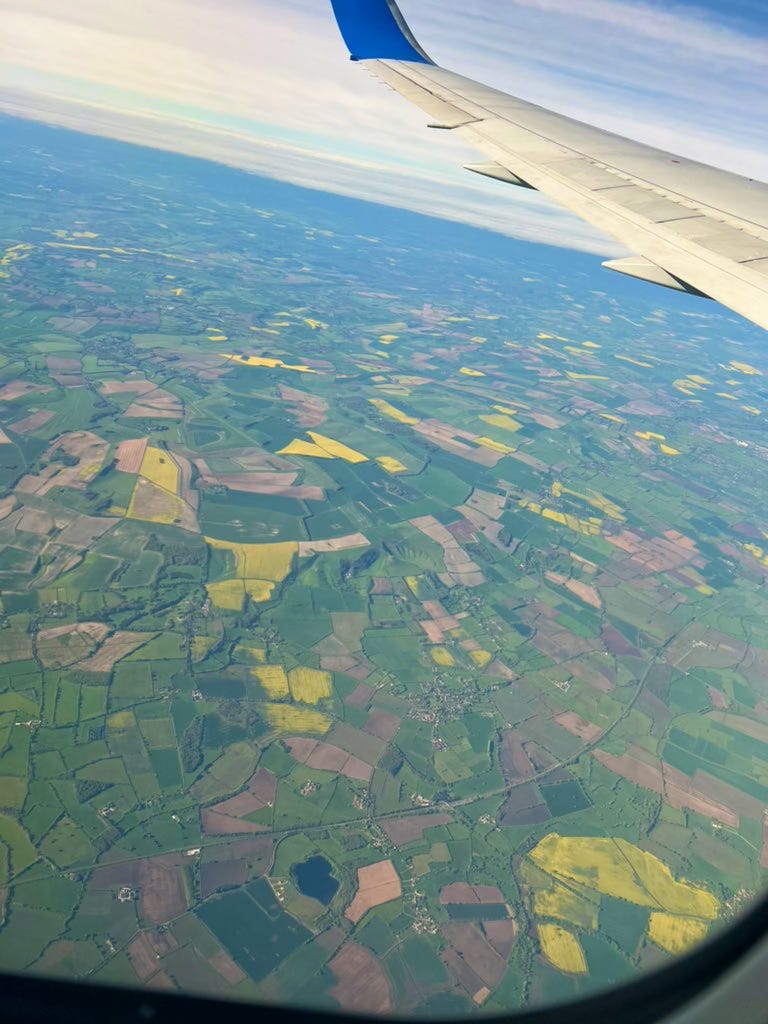
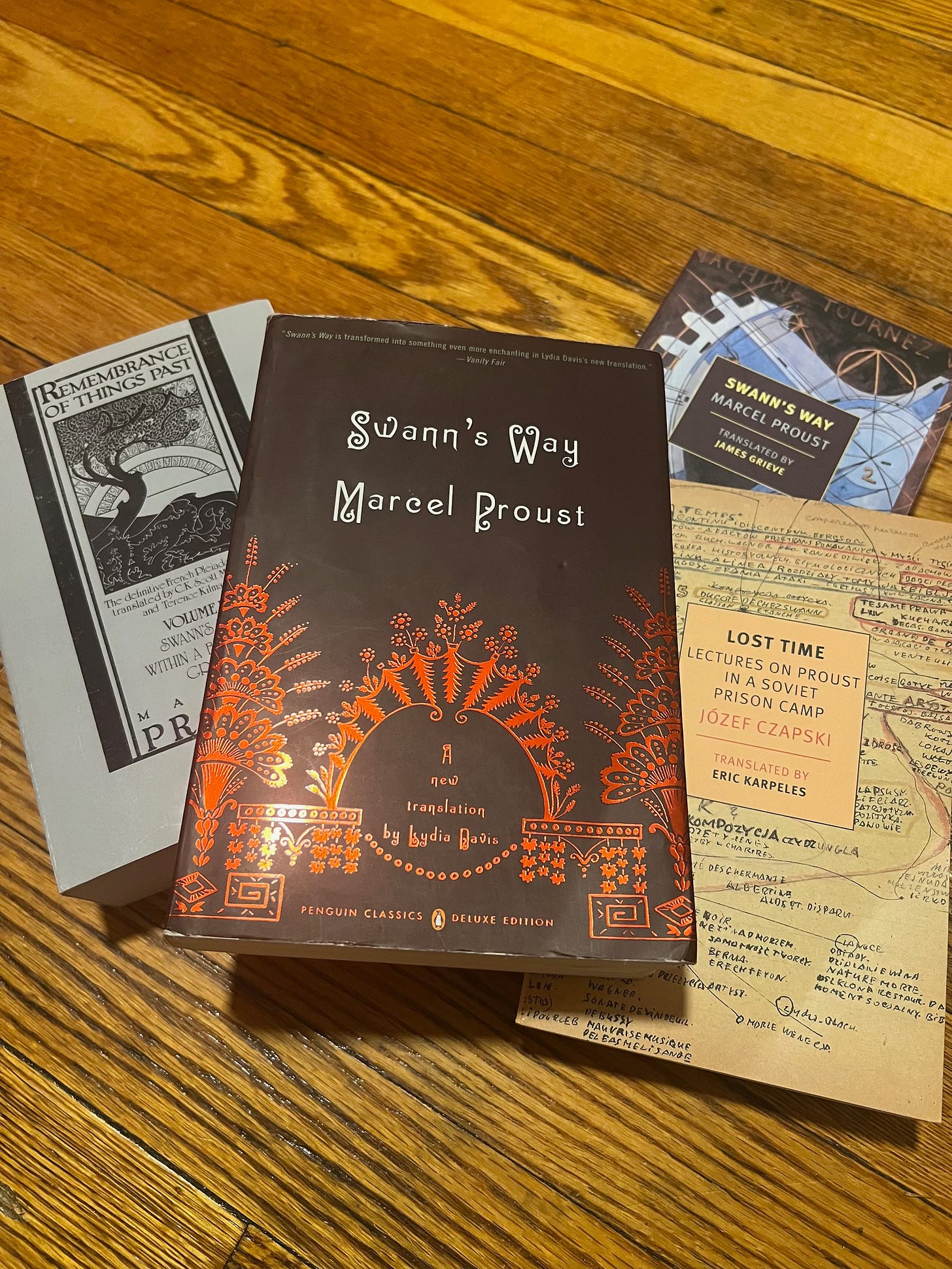
omg had no idea the rubin museum is closing, that’s such a bummer
Francois, how I love her.